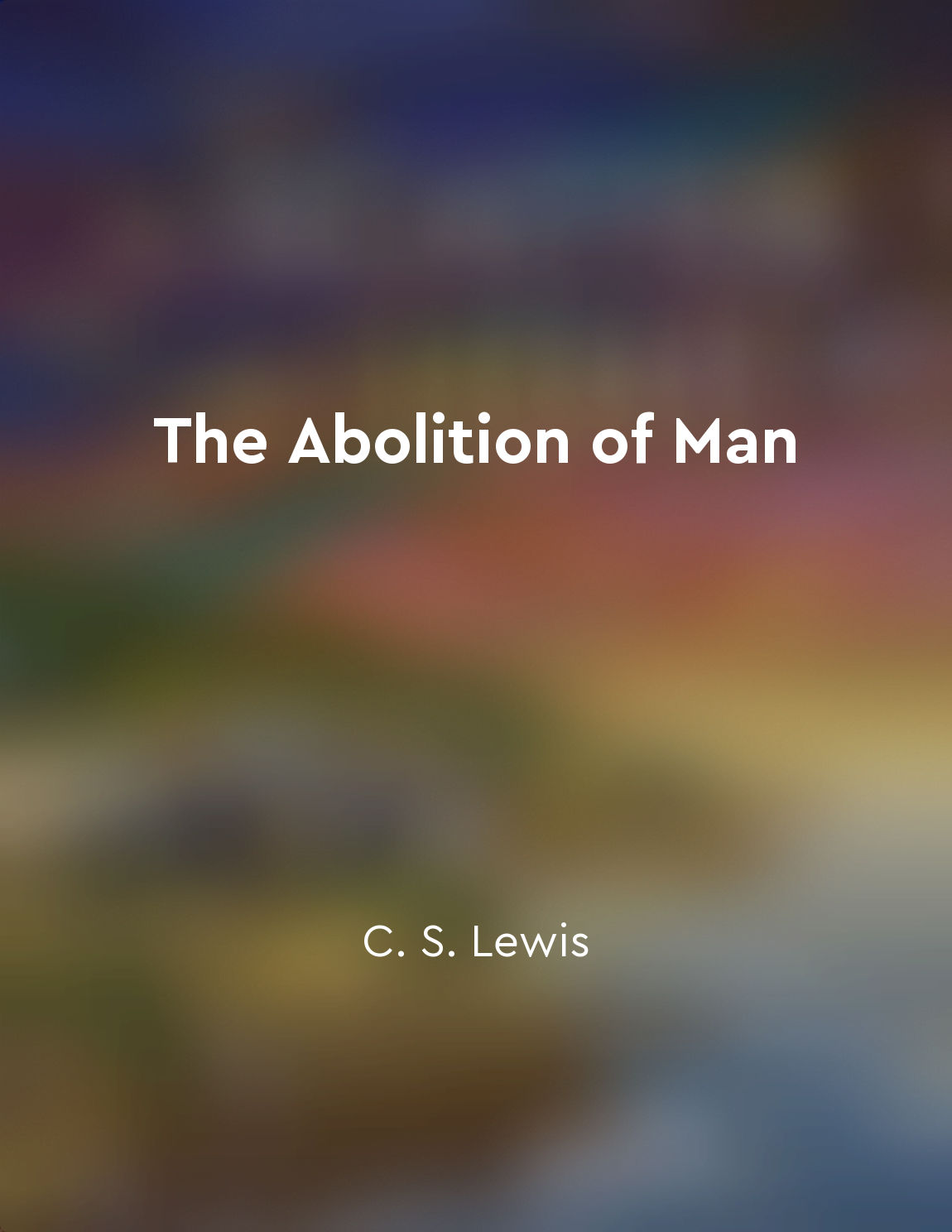The relationship between beauty and moral character from "summary" of The Abolition of Man by C. S. Lewis
In the experience of the beautiful we may conclude that the object is not only admirable, but worthy of admiration. We do not merely say that it pleases us, but that it is pleasing. We are not merely expressing our own subjective state of mind; we are making a claim about the object itself. Our experience of beauty points beyond itself to a standard of value that exists independently of our own preferences. Similarly, our perception of the moral quality of a person's character is not merely a matter of personal opinion or cultural conditioning. We recognize that certain actions are truly good or truly evil, regardless of our individual perspectives. Just as with beauty, our moral judgments imply an objective standard of value that transcends any particular individual or society. Beauty and goodness are not arbitrary constructs, but reflections of a deeper reality that exists beyond the physical world. When we encounter beauty or moral goodness, we are encountering glimpses of the eternal and the transcendent. These experiences awaken within us a sense of wonder and awe, connecting us to something greater than ourselves. To deny the relationship between beauty and moral character is to reduce both to mere subjective preferences or social conventions. It is to rob the world of its intrinsic value and significance, reducing everything to the level of personal taste or utility. In doing so, we diminish our capacity for wonder and reverence, closing ourselves off to the deeper truths that beauty and goodness reveal.- The connection between beauty and moral character is a reminder of our place within a larger cosmic order. It calls us to transcend our own limited perspectives and open ourselves to the beauty and goodness that surround us. In recognizing the objective reality of beauty and morality, we affirm our own capacity for understanding and appreciation, and open ourselves to the transformative power of truth and goodness.


